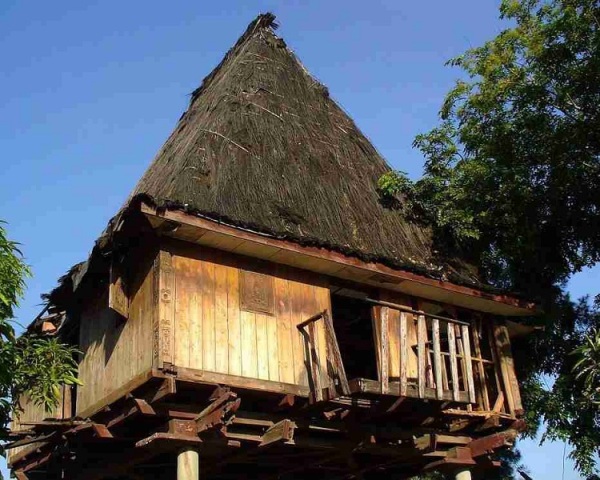East Timor, situated in Southeast Asia, has a number of fun and interesting facts surrounding it. With this article, know more about East Timor.
Facts About East Timor
East Timor is a country in Southeast Asia, situated around 640 km (400 miles) to the northwest of Darwin, Australia. The geographical boundaries of the country include the eastern half of the island of Timor, the nearby islands of Atauro and Jaco and Oecussi-Ambeno, an exclave on the northwestern side of the island. The people of East Timor are known as East Timorese and primarily belong to Melanesian races. As many as 12 local languages are spoken in the country, which can be further divided into 35 dialects or sub-dialects. However, most of the people are fluent in Bahasa Indonesian. The economy of this country is lower-middle because of the aftermath of the long struggles for independence against Indonesia, which caused a lot infrastructural damage. But as years passed by, the island has shown some progress. In case you want to know more about East Timor, make use of the information provided in the following lines. 

Image: By yeowatzup from Katlenburg-Lindau, Germany [CC-BY-2.0 (http://creativecommons.org/licenses/by/2.0)], via Wikimedia Commons
Fast Facts
Continent: Asia
Area: 14,874 km²
Capital: Dili
Population: 1,066,582
Currency: US$
Official Languages: Portuguese and Tetun
Independence Day: May 20, 2002
Type Of Government: Parliamentary system
Fun & Interesting Facts about East Timor
- The official name of East Timor is the ‘Democratic Republic of Timor-Leste’.
- Tetum and Portuguese are the official languages of East Timor, while Indonesian and English are the working ones.
- Majority of the people in East Timor are are Roman Catholics, followed by Protestants, Muslims, Hindus and Buddhists.
- The currency of East Timor is US Dollar (US$).
- The capital of East Timo ris Dili.
- In East Timor, the ‘Head of State’ is the President.
- East Timor follows the system of Parliamentary republic.
- East Timor is divided into thirteen administrative districts, which are further divided into 65 sub-districts, 443 sucos and 2,336 towns, villages and hamlets.
- East Timor was made a Portugal colony in the 16th century. It declared independence in late 1975.
- East Timor was invaded and occupied by Indonesia soon after declaring independence and gained freedom in 1999, following the United Nations-sponsored act of ‘self-determination’.
- In May 2002, East Timor became the first new sovereign state of the twenty-first century.
- East Timor is one of only two primarily Roman Catholic countries in Southeast Asia, the other being Philippines.
- Foho Tatamailau (2,963 m) forms the highest point in East Timor.
- It is said that the island of Timor has a shape much similar to that of a crocodile.
- Melanesian people migrated to Timor around 3000 BC, while those from South China and North Indochina came in 2500 BC.
- Elections were held in East Timor, for the first time, in August 2001.
- The natives of Timor have descended from three races of migrants. The Vedo-Australoid people, related to Sri Lankans, were the first ones to settle. They arrived between 40,000 and 20,000 B.C. The Melanesian people arrived here around 3,000 B.C. and then came the Malay and Hakka people from southern China.
- Ancient Timor used to export beeswax, spices, and fragrant sandalwood.
- Printing, soap manufacturing and handicrafts form the major industries of Timor.
- Their main agricultural produce is coffee, rice, maize and cassava.
- East Timor has two seasons: wet and dry. The wet season is from December to April and the dry season is from May to November.
- East Timor is one of the poorest nations in Asia; however, the presence of oil in the Timor Sea can benefit the island a lot.
- The culture of East Timor is heavily influenced by the Portuguese, Roman Catholic, and Indonesians.
- In 1996, a Nobel Peace Prize was shared by two East Timorese activists named Bishop Carlos Filipe Ximenes Belo and José Ramos-Horta, for their struggle to achieve freedom peacefully.
- According to the ancient Austronesian (the natives of Timor) legends, Timor was formed after an ageing crocodile transformed into an island as compensation to a boy who helped the crocodile while it was unwell. The boy’s descendants are supposedly the natives of Timor.
- Poetry is an integral part of the tradition and the island is home to many ardent poets. Even the Prime Minister Xanana Gusmão is a notable poet.
See also
More from iloveindia.com
- Home Remedies | Ayurveda | Vastu | Yoga | Feng Shui | Tattoos | Fitness | Garden | Nutrition | Parenting | Bikes | Cars | Baby Care | Indian Weddings | Festivals | Party ideas | Horoscope 2015 | Pets | Finance | Figures of Speech | Hotels in India : Delhi | Hyderabad | Chennai | Mumbai | Kolkata | Bangalore | Ahmedabad | Jaipur
- Contact Us Careers Disclaimer Privacy Policy Advertise With Us Lifestyle Sitemap Copyright iloveindia.com. All Rights Reserved.







